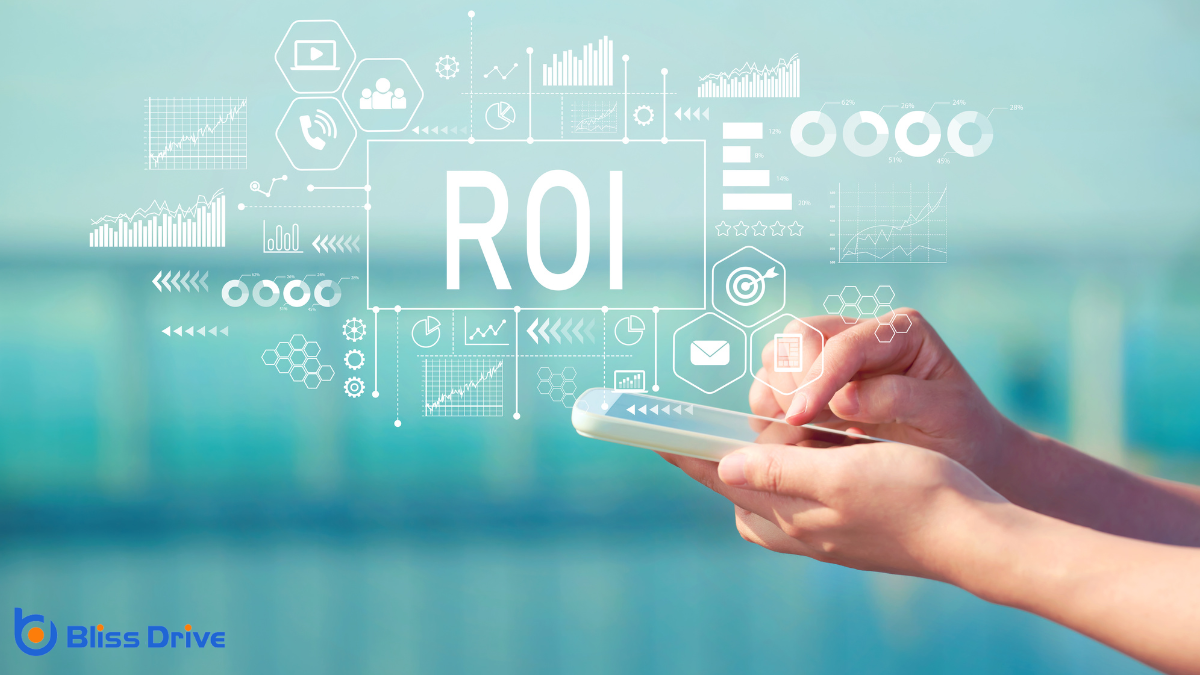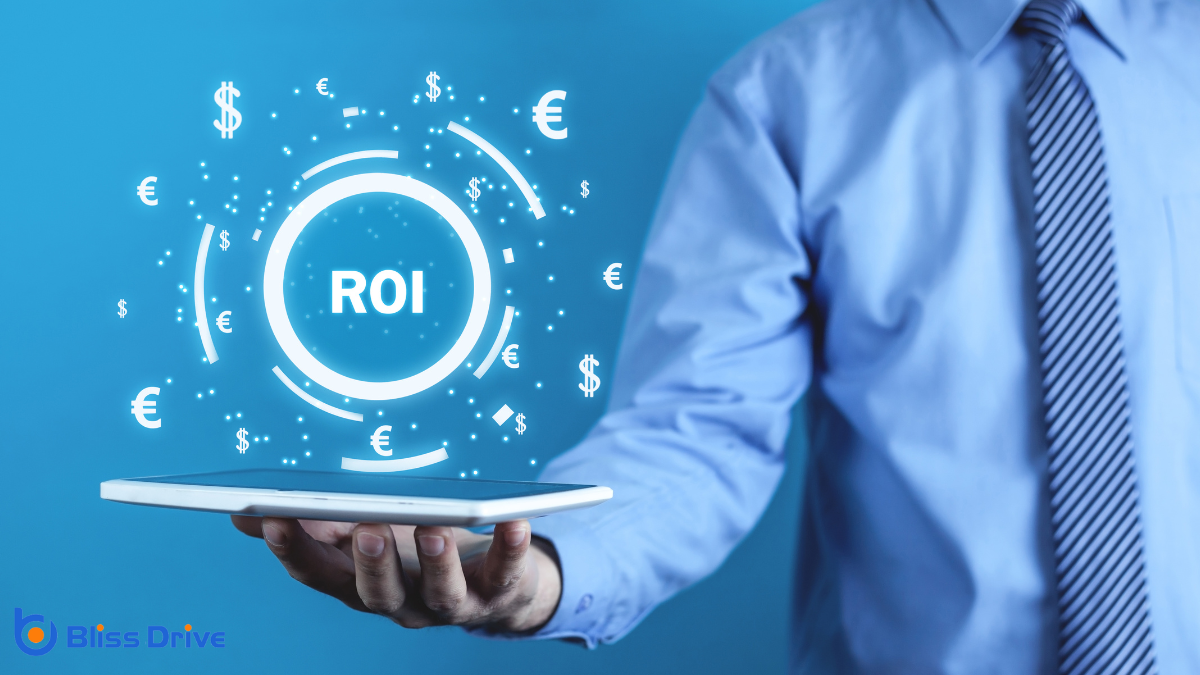Learn More About Us

When we talk about the ROI of digital marketing, we're really asking how much bang we're getting for our buck. It's all about measuring the financial return from our marketing efforts compared to what we've spent. But how do we calculate this effectively, and what metrics should we focus on? Let's explore how we can guarantee our strategies are not just reaching audiences but also converting them into loyal customers.
How do we navigate the vast landscape of digital marketing channels effectively? First, we need to understand the strengths and purposes of each channel.
Social media offers engagementThe interactions that users have with a brand’s content on social media. and brand visibility, while email marketingThe use of email to promote products or services, build relationships with potential customers, and ... provides direct communication and personalization. Search engine optimization (SEO) boosts our visibility on search engines, driving organic trafficVisitors who come to a website through unpaid search engine results.. Pay-per-click (PPC)An online advertising model where advertisers pay a fee each time their ad is clicked. advertising gives us immediate visibility with targeted reach.
In this diverse environment, identifying our audience's preferences is essential. We should focus on where our audience spends their time and tailor our strategies accordingly.
Consistency across channels guarantees our brand message remains coherent and impactful. By understanding these channels, we can choose the right mix to enhance our marketing efforts, reaching our audience effectively and efficiently.
Let's explore these channels wisely together.

Let's explore how we can effectively calculate the ROI in digital marketing by focusing on measuring campaign success and analyzing conversion rates.
We'll look at how tracking these metrics gives us valuable insights into what's working and what's not.
When evaluating the effectiveness of our digital marketing campaigns, it’s vital to understand how to accurately calculate ROI. By doing this, we can determine how well our efforts translate into financial gains.
To calculate ROI, we subtract the campaign's cost from the revenue it generated and then divide that number by the campaign's cost. This formula gives us a percentage that reflects our return on investment.
It’s important to include all campaign-related expenses, such as ad spendThe total amount of money spent on advertising campaigns., tools, and labor costs, to guarantee accuracy. A positive ROI indicates a successful campaign, while a negative one suggests the need for adjustments.
Although ROI is essential for evaluating financial outcomes, analyzing conversion rates provides deeper insights into campaign effectiveness. By focusing on conversion rates, we can understand how well our marketing efforts turn prospects into customers.
Let's explore key aspects that highlight the importance of conversion analysis:
Understanding the key metrics for measuring success is essential in evaluating the ROI of digital marketing efforts. By focusing on the right metrics, we can truly gauge our campaign's effectiveness and make informed decisions.
First, let's consider the Click-Through Rate (CTR)The percentage of users who click on a specific link or CTA.. It tells us how compelling our ads are by measuring the percentage of clicks on our ads versus impressions.
Next, Conversion Rate is significant, reflecting how well our site turns visitors into customers.
Then, there's Customer Acquisition Cost (CAC)The cost associated with acquiring a new customer, including marketing and sales expenses., which helps us understand what we spend to gain a new customer.
Finally, Return on Ad Spend (ROAS)A metric that measures the revenue generated for every dollar spent on advertising. calculates revenue generated per dollar spent on advertising.
To boost our digital ROI, we should start by leveraging data analyticsThe systematic computational analysis of data or statistics to gain insights and support decision-ma... to gain insights into customer behavior and campaign performance.
By enhancing targeted advertising, we can guarantee our messages reach the right audience at the right time.
Additionally, optimizing our conversion funnelThe stages a customer goes through from initial awareness to final conversion. will streamline the customer journeyThe complete experience a customer has with a brand, from initial awareness to post-purchase interac... and increase the likelihood of conversions.
When we harness the power of data analytics, we release the potential to considerably boost our digital marketing ROI.
By diving into the wealth of data at our fingertips, we can make informed decisions that enhance our strategies. To truly access this potential, let's focus on a few key areas:
With data analytics providing us valuable insights, we can now turn our focus to enhancing targeted advertising as a strategy to boost digital ROI. By leveraging these insights, we identify our audience's preferences and behaviors, allowing us to tailor our ads precisely. This means crafting messages that resonate and choosing platforms where our audience spends most of their time.
It’s not just about reaching more people; it’s about reaching the right people.
Let’s refine our audience segments using demographic, geographic, and psychographic data. This approach guarantees our advertising budget is spent wisely, maximizing returns.
As we immerse ourselves in optimizing the conversion funnel, let's focus on streamlining each stage to enhance digital ROI.
We need to identify where potential customers may drop off and address those gaps. By doing so, we guarantee a smoother journey from awareness to conversion.
Here are essential strategies to take into account:

While digital marketing offers incredible potential for growth, measuring its return on investment (ROI)A measure of the profitability of an investment, calculated by dividing the net profit by the cost o... presents several challenges. First, the digital landscape is vast and constantly evolving, making it difficult for us to track every variable accurately.
We often face the issue of attributing results to specific campaigns due to multiple touchpoints along a customer journey. This complexity can obscure which efforts truly drive conversions.
Additionally, not all digital benefits are immediately quantifiable; brand awarenessThe extent to which consumers are familiar with the qualities or image of a particular brand. and customer loyaltyThe likelihood of customers to continue purchasing from a brand over time. are valuable yet hard to measure in direct financial terms.
Moreover, data privacyProtecting data from unauthorized access and ensuring the privacy of individuals' information. regulations can limit our access to extensive analytics, complicating our ability to gather insights.
Despite these hurdles, it's essential to remain committed to refining our strategies for more accurate ROI measurement.
Looking ahead, we anticipate several emerging trends that will transform how we measure digital marketing ROI. As technology evolves, we'll need to adapt our strategies to stay ahead.
Let's explore some key trends:
In the fast-paced world of digital marketing, we need to constantly evaluate our strategies to maximize ROI. By understanding key metrics like conversion rates and Customer Acquisition Cost, we can fine-tune our campaigns for greater success. While challenges persist in accurately measuring ROI, staying informed about future trends will help us adapt and thrive. Let's embrace data-driven insights and continue optimizing our efforts to guarantee we're making the most of our digital marketing investments.
